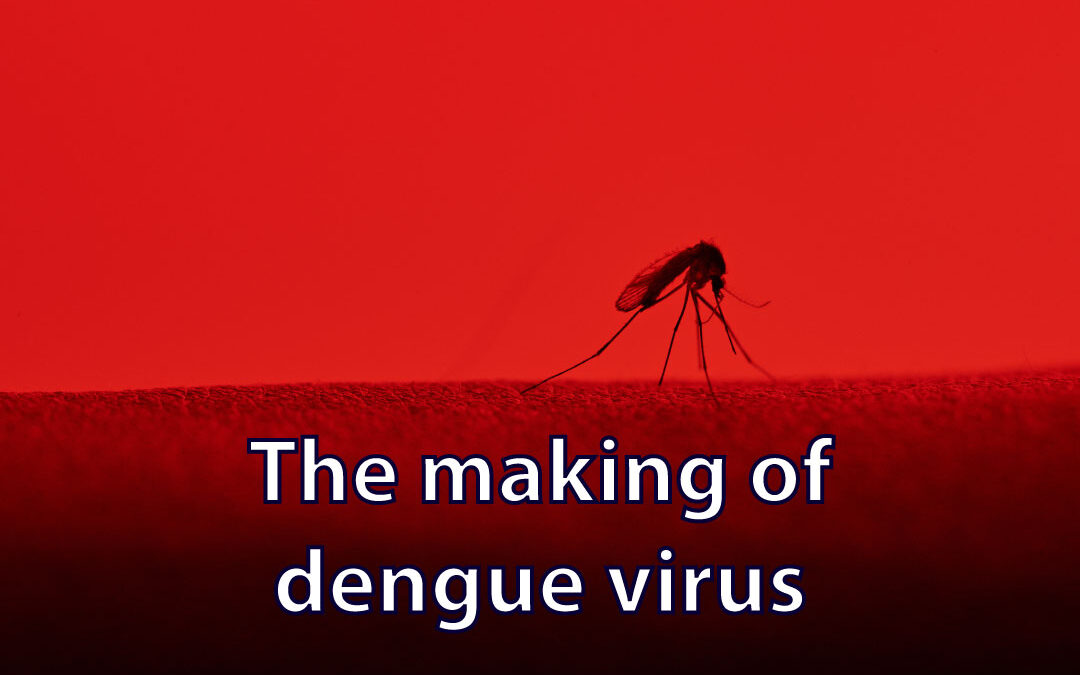In last month’s blog, we have seen how the glycoprotein NS1 plays an essential role in flavivirus RNA replication. This month, we continue with this theme and describe other two non-structural proteins of dengue virus, NS2 and NS3.
NS2, viral RNA synthesis, and virion assembly
The NS2 region encodes two proteins, NS2A and NS2B.
NS2A
Non-structural protein 2A is a 22-kDa hydrophobic transmembrane protein known to associate with the membrane of the endoplasmic reticulum. After flavivirus polyprotein translation, the N terminus of NS2A is cleaved from NS1 by an unknown host protease, and the C terminus is cleaved from NS2B in the cytoplasm by the viral NS2B-NS3 protease-cofactor complex (more details below).
Although little is known about the underlying mechanisms, NS2A has been shown to perform three critical functions:
- NS2A antagonizes the host immune response by inhibiting the interferon response.
- NS2A functions in viral RNA synthesis. Upon viral translation, a minus-sense RNA is synthesized from the genomic RNA template, forming a double-stranded RNA. The minus-strand RNA then serves as a template to make multiple copies of plus-sense RNA that are packaged to form progeny virions. NS2A is found to colocalize with viral double-stranded RNA in infected cells and interacts with the 3′ UTR of genomic RNA.
- NS2A functions in virion assembly: an R84A substitution in NS2A eliminates DENV-2 assembly.
NS2B
Non-structural protein 2B is a 15-kDa hydrophobic protein that acts as a cofactor of the NS3 protease. While the N and C termini of NS2B are located in the cytoplasm, the central region contains alpha-helical transmembrane domains responsible for the NS2B membrane association. Multiple studies have demonstrated the ability of the NS2B protein to oligomerize, producing pore-like structures, and modifying the permeability membranes. This would make of NS2B a possible viroporin, causing changes in membrane permeability during DENV infection.
NS3, a central role in the viral life cycle
Because of its central role in the viral life cycle, the NS3 protein is a particularly interesting molecular target for antiviral compounds. The second largest non-structural protein (~70 kDa) of the virus, NS3 is a multifunctional protein that acts as a serine protease and a C-terminal RNA helicase.
NS3 N-terminal serine protease
The N-terminal trypsin-like serine protease is needed to release the individual viral proteins from the long viral polyprotein, and its activity is enhanced by NS2B as the cofactor. In fact, this protease domain of NS3 requires the central region of NS2B as a cofactor for proper folding. The NS2B-NS3 complex cleaves the precursor polyprotein in the membrane of the host ER at NS2A/NS2B, NS2B/NS3, NS3/NS4A, and NS4B/NS5 junctions, as well as at internal sites within C, NS2A, NS3, and NS4A. As these cleavages are all obligate steps of the viral life cycle, this protease complex is an attractive target for antiviral drug development.
NS3 C-terminal RNA helicase
The C-terminal of NS3 forms the RNA helicase domain that modifies the topology of nucleic acids. This part of the protein seems to unwind the double-stranded RNA during RNA replication using energy supplied by NTP hydrolysis, thereby facilitating further rounds of viral replication and transcription. Besides the unwinding activity, the helicase has also been proposed to play a role in RNA capping.




